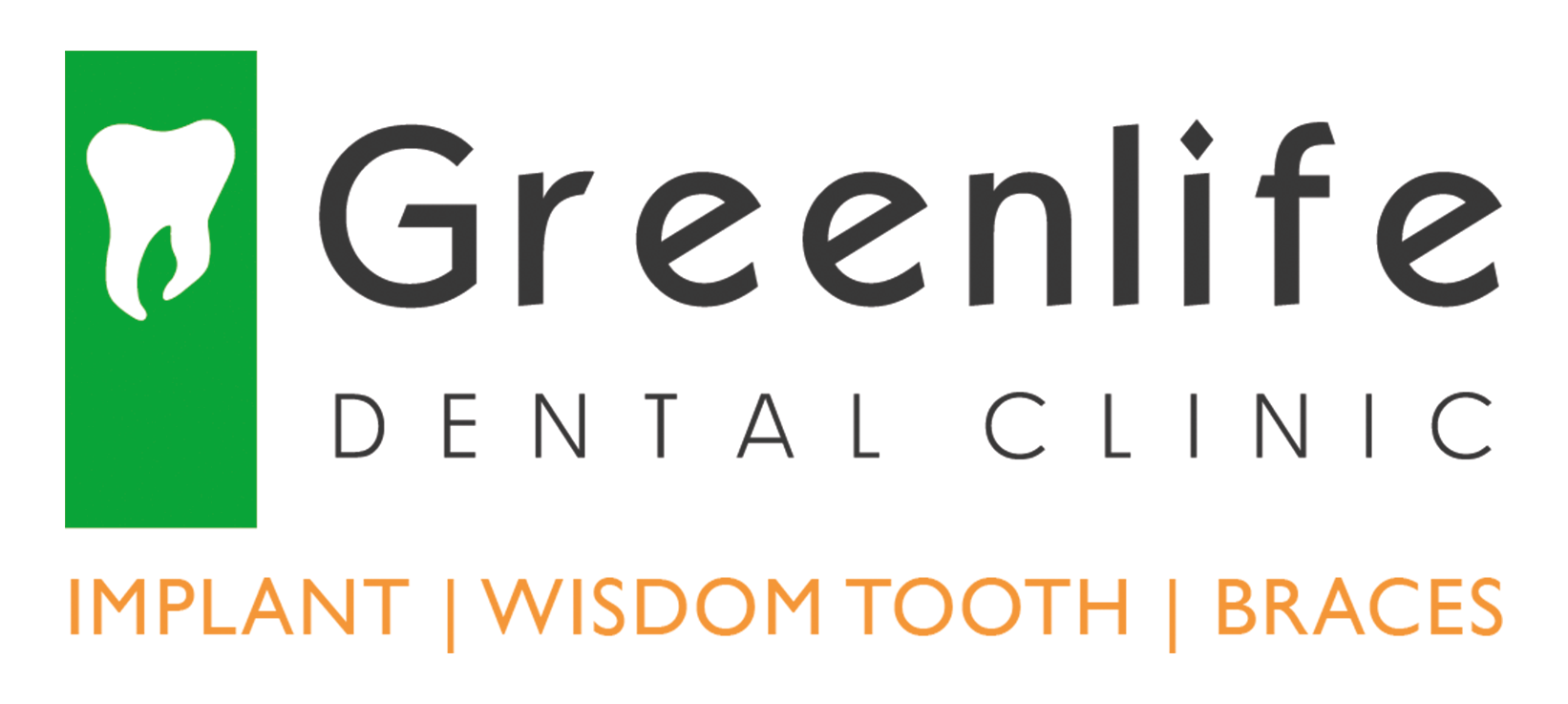What are Braces and How does it Work?
Braces are used to align and straighten crooked teeth. They can also correct teeth that are either too far out or too far inside, rotated, angulated undesirably and even in cases where there is too much space between teeth.
Which Type of Braces is Suitable for me?
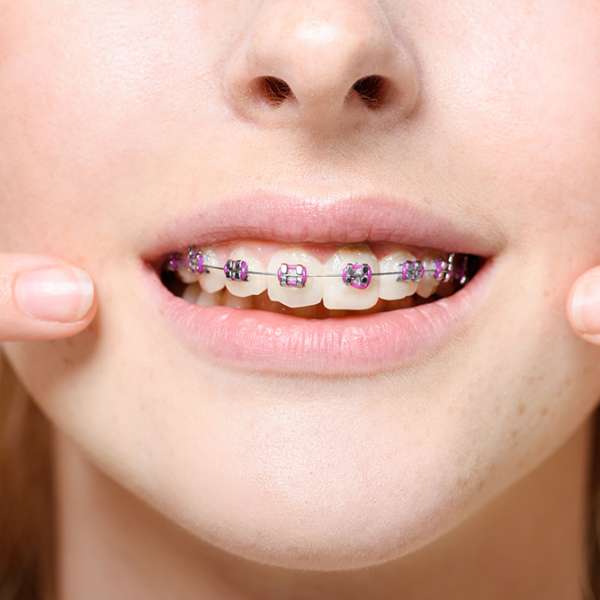 Metal braces:
Metal braces:
The most common and affordable type of braces made of high-grade stainless steel are more effective at treating severe cases as they give our dentist more control over the correction of the teeth movement in small increments.
Since they are non-removable, it means that the braces are working in your mouth 24 hours every single day, without the risk of not wearing or losing your clear aligners.
The metal braces are most popular among teenagers and young adults who like to decorate their teeth as the wires are held onto the brackets with coloured rubber bands of their choice.
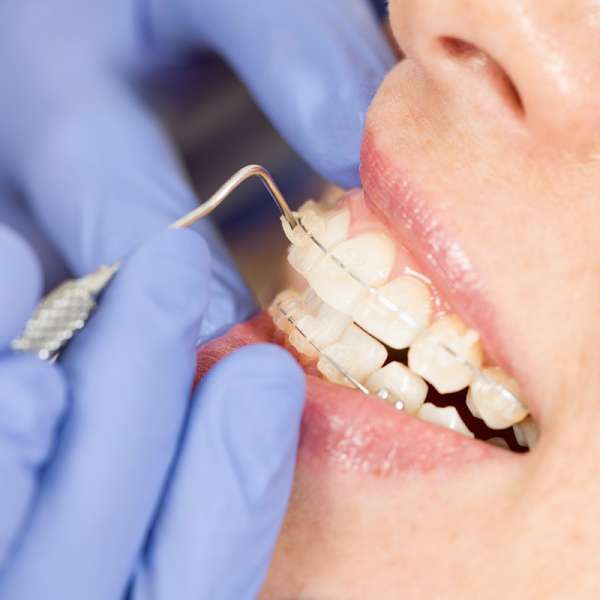

Ceramic braces:
More aesthetically pleasing compared to metal braces. The brackets are made of tooth-coloured materials that blend in naturally with the colour of your teeth, along with a single line of metal wire, which is the only noticeable component of the braces.
Ceramic braces are a popular choice for patients who want some form of aesthetic and less visible braces, with only a slight increase in price compared to metal braces.
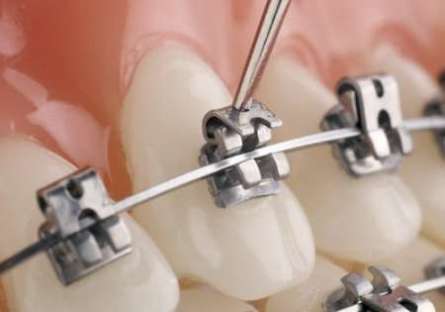

Self-ligating Braces:
Designed with in-built tiny “metal gates” to hold the wire on the braces without the need for rubber band, hence the name self-ligating.
Without the rubber band pressing the wire against the braces means less friction and therefore less force is required to move the teeth, making it more comfortable during treatment.
Self-ligating braces are available in both the metal and ceramic versions depending on the aesthetic needs of the patient.
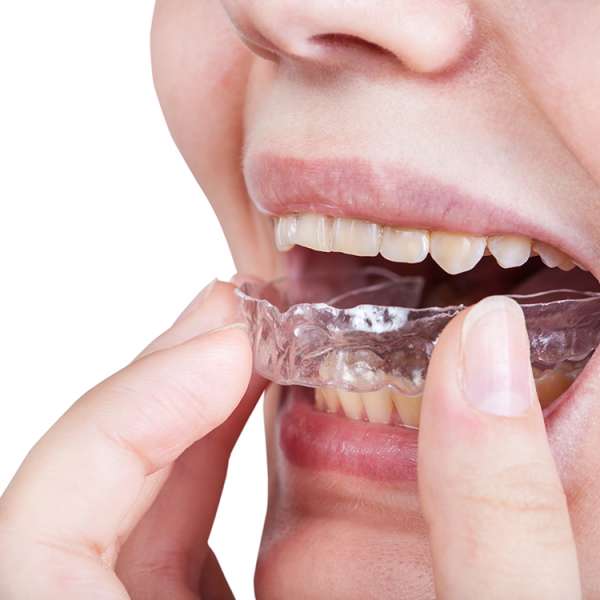

Clear aligners:
So called “the invisible braces” as they are made of clear plastic that are covered over the teeth.
There are many brands of clear aligners in the market and the one with the longest history and most established in the market is Invisalign.
Each patient has a series of customized aligners to wear over a period of time, with each aligner moving the teeth a little more each time a new set of aligners is changed, until the final aligners move the teeth to their completed position.
The main advantage of clear aligners is that they are almost invisible thus making it a treatment of choice for those who are very conscious about the presence of metal braces in their mouth or their job does not allow them to wear conventional braces. They can be removed any time when you need to attend special events during your treatment period.
However, since it is removable, there is a risk of you losing your clear aligners and also forgetting to wear them for a long enough duration for effective tooth movement.
How Long does the Whole Treatment take?
Braces treatment duration typically ranges from 12 to 36 months. There are many factors that affects this durations like age, cooperation level, timing of growth spurts in teenagers and of course the severity and complexity of the crowding of the teeth.
What Happens after Braces?
Once the braces had moved the teeth into the final desired position, the braces treatment is almost complete. Sometimes, the dentist may keep the teeth in this position for a few more months to stabilise the result before removing the braces. When the braces treatment is completed, the braces are removed and a set of retainers will be made for you.
What is a Retainer?
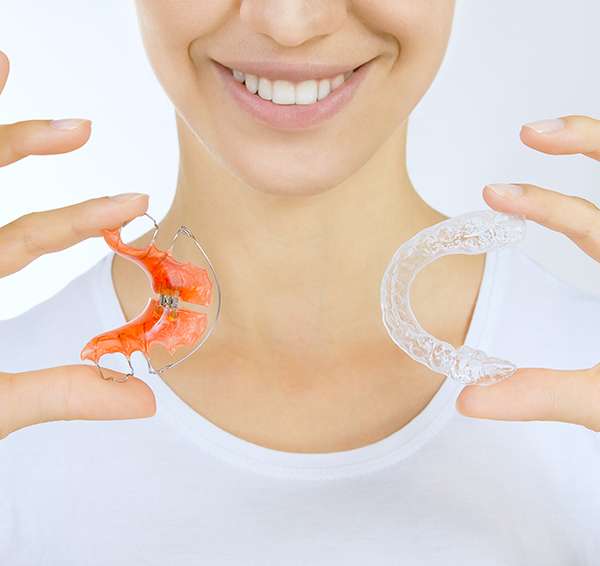

A retainer is a custom-made, removable or fixed device that keeps your teeth in their new finalised position after braces/aligners have been removed.
Otherwise, the teeth may relapse and move out of position again without the support of the braces. Fortunately, teeth rarely relapse to their original, pre-braces treatment position.
Why Do You Need a Retainer?
After the removal of the braces, the teeth are no longer held in position by the braces and thus they can shift back to their original position. Retainers are removable dental appliance that are used to keep the teeth in the desired position after the removal of the braces at the completion stage.
Types of Retainers
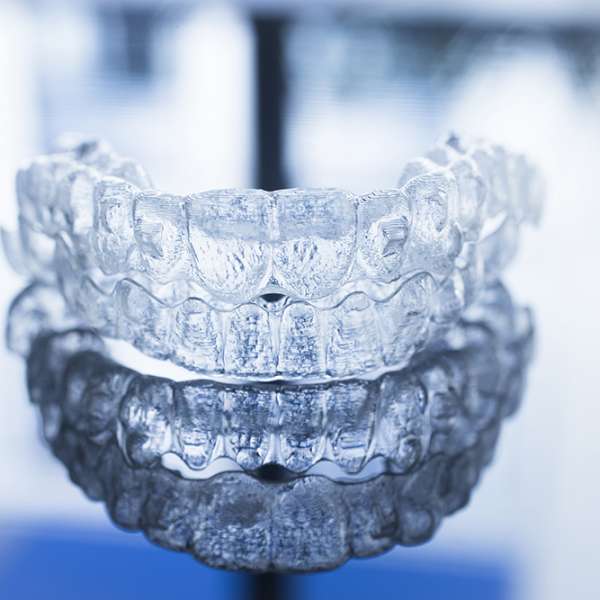

Clear plastic retainer:
Also known as vacuum-formed retainers, are made of a clear plastic material that is moulded to fit over the teeth and appear almost invisible when worn.
They are more comfortable to wear as they do not intrude into the palate and tongue spaces compared to the Hawley retainers.
They are the most popular choice of retainers for most people. It usually will last a few years of wears and a new set may be needed in the future.
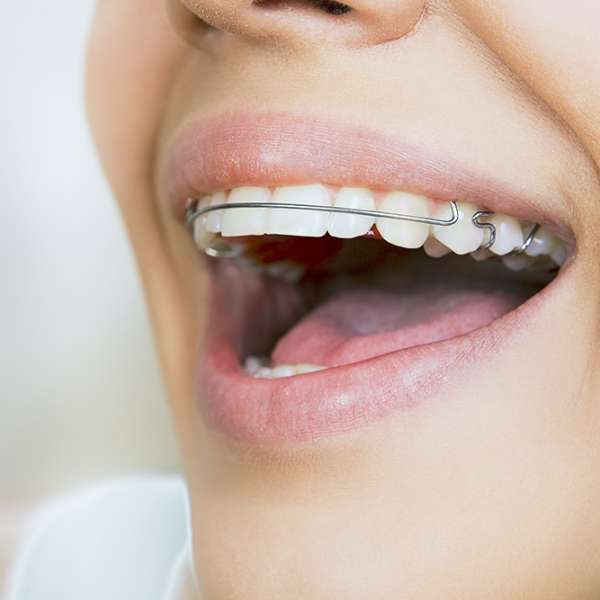

Hawley retainer:
Traditional retainers with a metal wire that runs across the front of your teeth, they are very noticeable to other and may affect your speech when initially worn as it covers the roof of your mouth.
They are more durable and easy to clean.
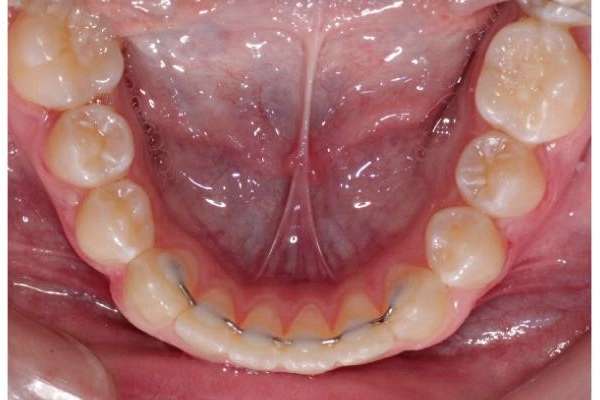

Fixed retainer:
Consist of a thin wire that are glued or bonded onto the inside of your teeth after the removal of the braces.
They are invisible to others but can make flossing your teeth more challenging. They can remain inside the mouth indefinitely as part of the retention solution for your teeth.
How Long do I Need to Wear a Retainer?
The retainers are to be worn according to the dentist’s instruction. The frequency and length of time for wearing retainers varies from patients to patients. You need to wear the retainers all day (full-time) as the bone and gum around the teeth adjust to the new position of the teeth. As the teeth begin to settle in their position, the wear time can be reduced and with less frequency.
The standard recommendation of wear is usually full-time (other than eating and brushing teeth) for the first year and part-time (during sleep) every nights for the second years. Then you can wear part-time intermittently (alternate nights during sleep) for as long as possible to keep your teeth in position. Your retainer, whether it is a removable or fixed, is a long term treatment action plan for maintaining straight teeth and should last for many years as long as you want to your teeth straight.
How Long Will the Completed Straight Teeth Last?
The straight teeth will last as long as you wear the retainers. The act of maintaining the straightened teeth is an active process that need the participation of the patient. The teeth are part of the living body and position of the teeth will change with time whether you had braces done or not. It is important for you to continue to visit our dentist every 6 months for routine check-ups together with your retainers after the completion of your braces treatment. This will allow us to detect any relapse or breakage to your retainers early.
Is the Braces Treatment Painful?
The braces are attached to the outer surfaces of your upper and lower teeth and they protrude a little onto the lip and cheek causing some irritations or occasional ulcers. It will take some time, maybe few days to weeks, for your lip and cheek to get used to the presence of these brackets and wire. You will be given wax to apply to the protruding braces to keep them from rubbing against the inside of your mouth. Such discomfort will be gone in a few days in most patients.
Expect some discomfort or mild ache or pain as the forces are applied to move the crooked teeth through the bone and gum. The moving teeth may feel “weak” or slightly shaky when you eat and you may need to go on soft diet few days after each adjustment visits.
How Often Must I Come for the Adjustment of the Braces?
The interval between each visit is usually about 4- 6 weeks, sometimes maybe shorter or longer depends on the different stages of the braces treatment. At each visit, our dentist may change wires or put on need elastic bands or springs to assist in the movement of the teeth. Each adjustment visit lasts about 15-30 minutes depending on the complexity of the case.
FAQs
Must I extract my teeth in order to do braces?
Not every case need to have teeth to be removed before doing braces. The extraction of teeth is to make room to align the rest of the crooked teeth into the upper and lower arches in overcrowding case or to correct protruding teeth. Most of the time, patient has to extract 4 teeth (usually the premolars), one from each quadrant. Sometimes extraction or 2 teeth is enough or maybe there is no need for extraction at all. If you are deemed to have sufficient space to straighten your teeth, then you can avoid extracting any of your teeth. If there is not enough spaces to align the crowded teeth, then extraction is the most likely options. Every patient is different and our dentist will discuss and explain to you your customised treatment plan after a thorough clinical analysis and X-ray examination.
Are there any side effects with braces?
There are some side effects of braces treatment but most are preventable with your help in maintaining a high standard of oral hygiene. Braces in your mouth can trap more food and make normal cleaning difficult, thus increasing the risk of tooth decay and gum disease. This can be easily avoided if you are meticulous in your brushing after each meal, as well as coming for regular teeth cleaning with our dentist every 4-6 months.
When moving certain tooth with history of traumatic injuries or with large fillings, these tooth movement may cause the injured nerve (pulps) to died. If this happened, root canal treatment is needed to save the dead tooth.
Another potential complications of tooth movement is the resorption or “shortening” of the root. In most cases, these resorption cause about 1-2mm of shortening of the roots of the teeth that are moved during braces treatment and does not affect the health and longevity of the teeth. However, in rare cases, more root destruction may occur leading to slightly mobile teeth or even loss of teeth.
How old should my child be in order to start braces treatment?
Most braces treatment can start after the child has lose all the milk teeth, that is about early teenager period (13-14 years old). However, there are instances where treatment is required much earlier to reduce the severity of malocclusion during early childhood. This form of braces treatment is called interceptive orthodontics. It may not use the conventional braces for treatment, instead the child may be required to wear a removable appliance to correct the dental problems. The objective is to arrest teeth development problem early before it worsens and the child needing more complex and costly dental treatment later in life. Our dentist is trained to identify such problems in your child and will be able to provide you with more insights into the oral conditions of your child. Hence, it will be a good idea to bring your child to visit the dentist early for routine check-up and allow to receive timely treatment if necessary.
Am I too old for braces?
There is no age limit in braces treatment as long as you have healthy teeth and gum. Teeth can still move in adulthood but the movement may be slower compared to a teenager having braces during their growth spurts.
What is the difference between a dentist and orthodontist?
Some general dentists are trained to treat simple to moderate crowding with braces. More complex cases and those that may involve jaw surgeries are referred to an orthodontist. An orthodontist is a general dentist who undergoes another 3 years of specialised training in braces treatment. Since the cases seen by the orthodontist are more complex, the treatment fee charged will be higher too.
Can I pay by instalment?
We have flexible plans available. Please call our clinics and we will be happy to assist you.
Can I use medisave to pay for braces treatment?
Medisave cannot be used for your braces treatment.
